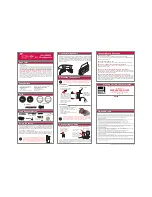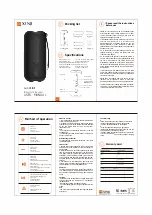
14
Installation
Modulator High Powered Omni Speaker (Model MOD Series)
Federal Signal www.fedsig.com
Wind speed and direction often affect the propagation of sound from the siren.
Consequently, the direction of the prevailing wind may be a significant factor to consider
when selecting the installation site(s) of a small, one- or two-site siren system. For
example, if the prevailing wind is from the west, it may be desirable to install the siren
toward the western edge of the area to be covered.
Other factors to consider when selecting the installation site(s) include the availability
of suitable electrical power, the access to and ease of installation and maintenance, the
height of surrounding obstructions, and security against vandalism and any applicable
state or local noise control ordinance.
Installing the Sirens
ELECTROCUTION HAZARD: Electrocution or severe personal injury can occur
when making electrical connections, drilling holes, or lifting equipment. Therefore,
experienced electricians in accordance with national and local electrical codes,
acting under the direction of the installation crew safety foreman, should perform
the installation.
Most siren installations are one of two types: Pole Mount or Flat Surface Mount. These
two configurations make installing a siren possible in almost any situation. If the
installations in this section are unsuitable, modifying one of the configurations may be
practical.
A siren is typically installed 40 to 50 feet above the ground. If the installation is located
less than 40 feet above the ground, the sound intensity at close range may increase,
but at the same time, the effective range of the siren may be reduced. Conversely, if the
siren is located more than 50 feet above ground, the effective range of the siren may
increase, but the sound may skip over areas closer to the siren. These variables may
make it desirable to test the sound coverage of the siren at various heights and locations
whenever possible.
NOTE: To protect the speaker arrays from damage during shipping, all models have been
shipped without drivers installed.
Connecting the Driver Wires
After uncrating the siren, connect the driver wires:
1. Remove the four (4) driver access doors from each individual active module by
removing the four (4) bolt and washer sets of each door. Note the position of the flat
washer and lock washer.
2. Thread the drivers clockwise onto the horn throats.
3. Hand tighten approximately a half turn after gasket engagement.
4. Locate the two (2) wires tie wrapped near the end of the horn throat.
5. Note the label on the back of the drivers.
6. Connect the solid wire to terminal 1, the striped wire to terminal 2, and white jumpers
from 1 to 2 as shown in “Figure 6 Driver Connections” on page 20.














































